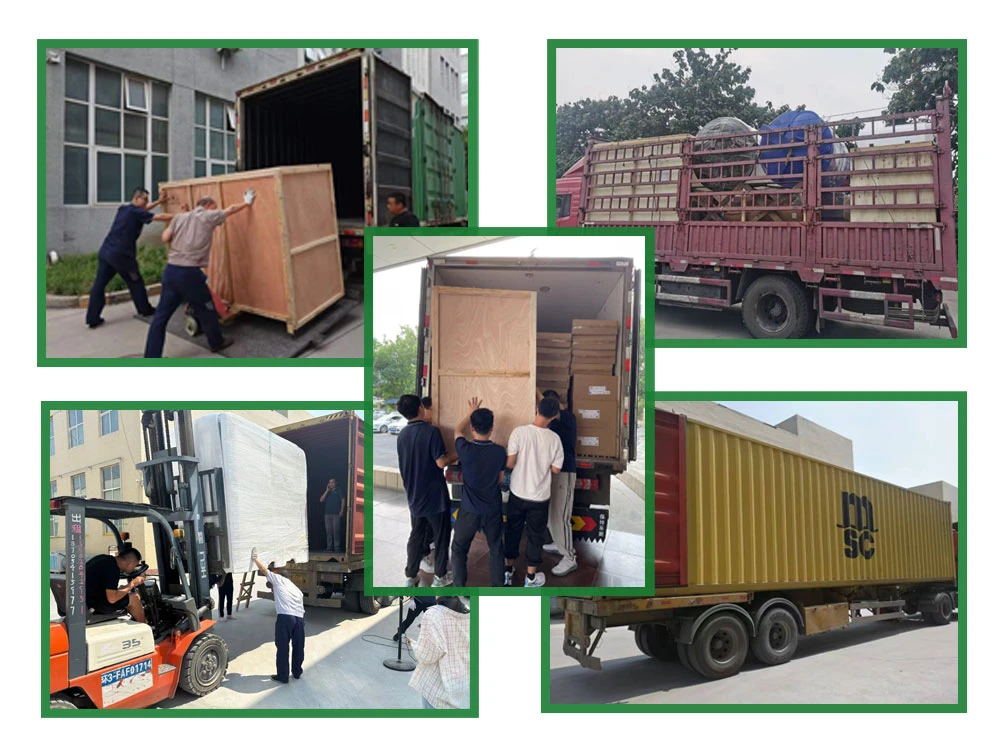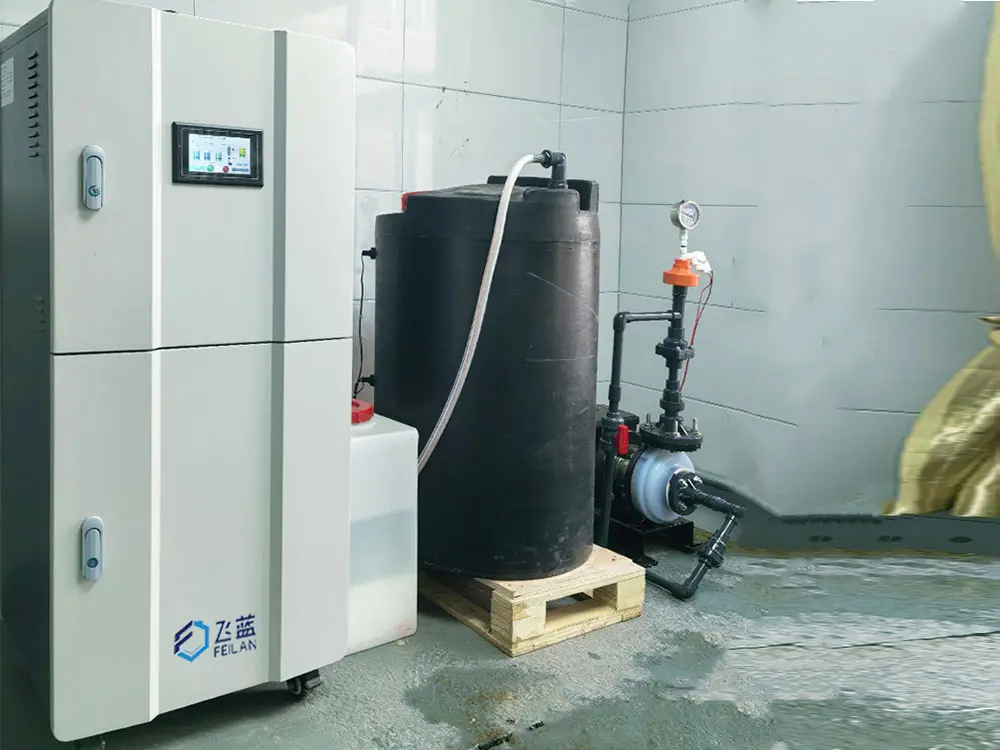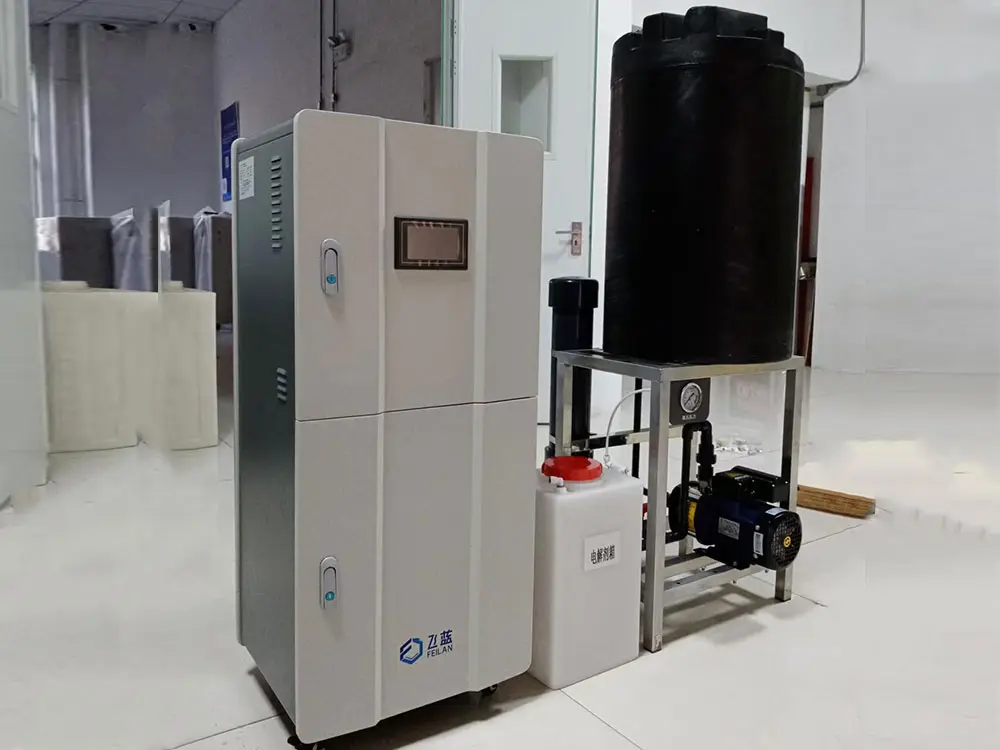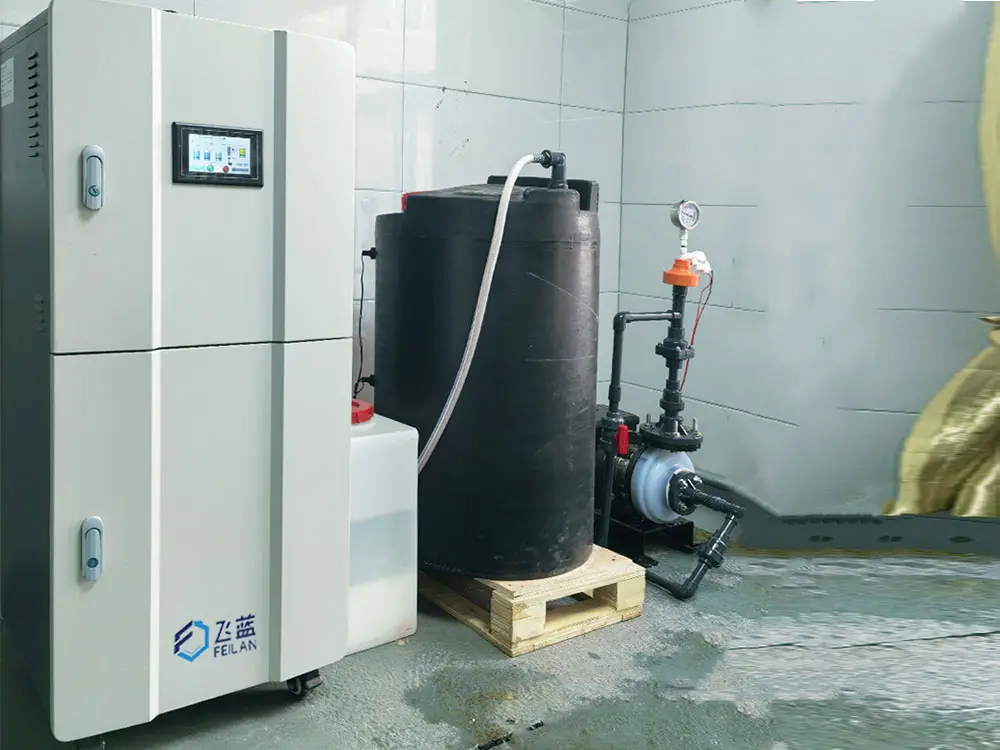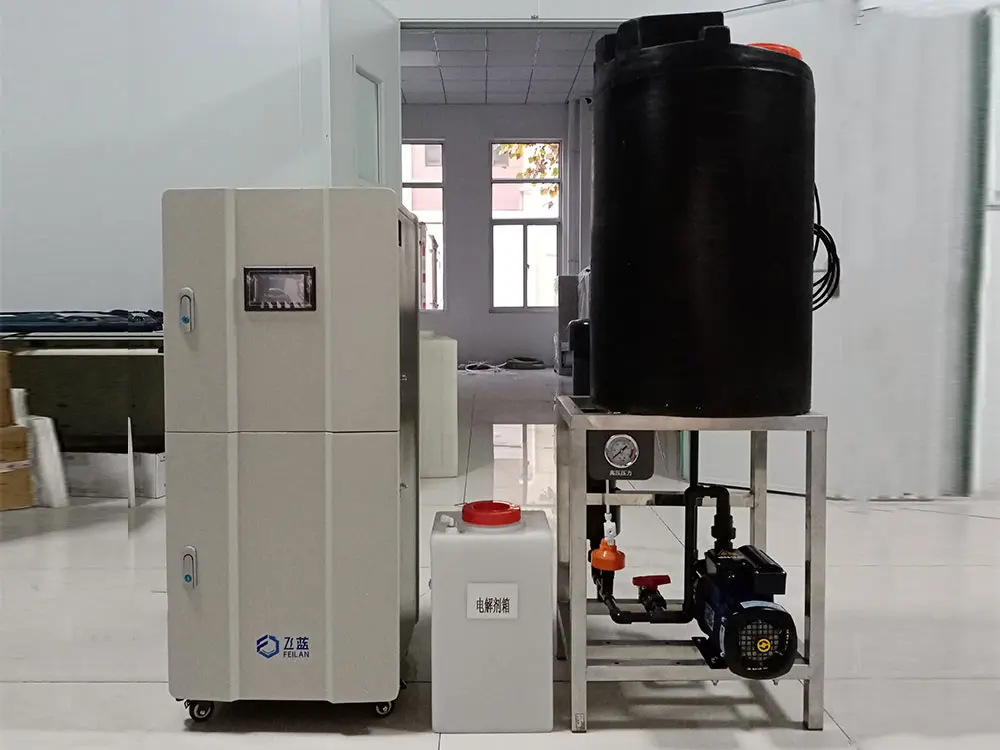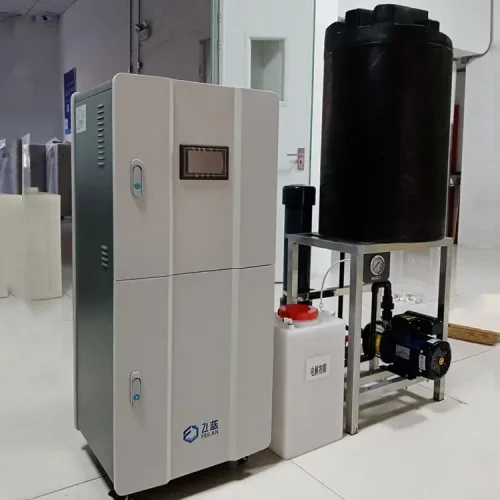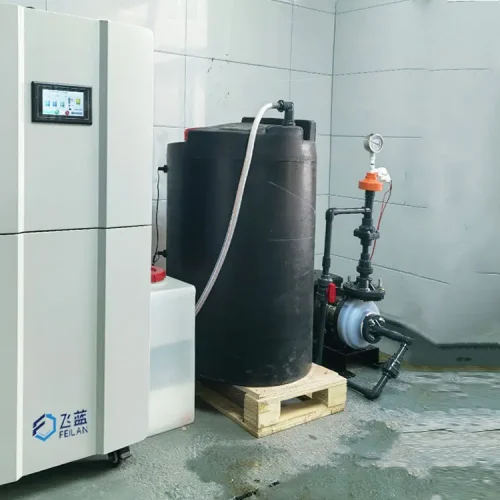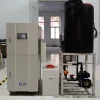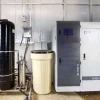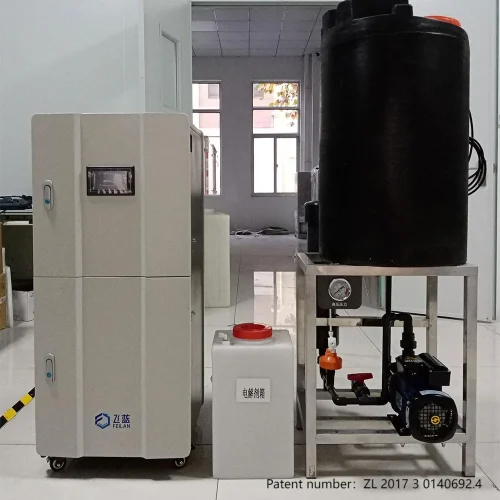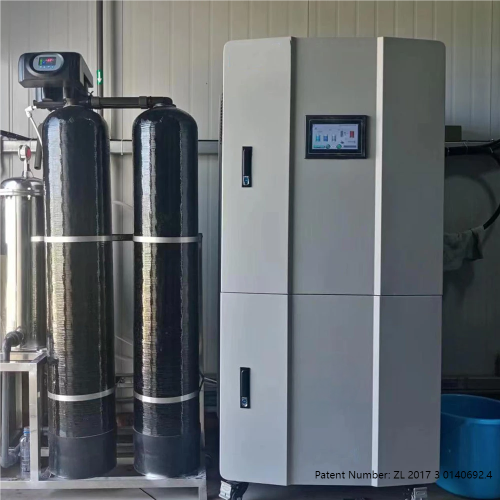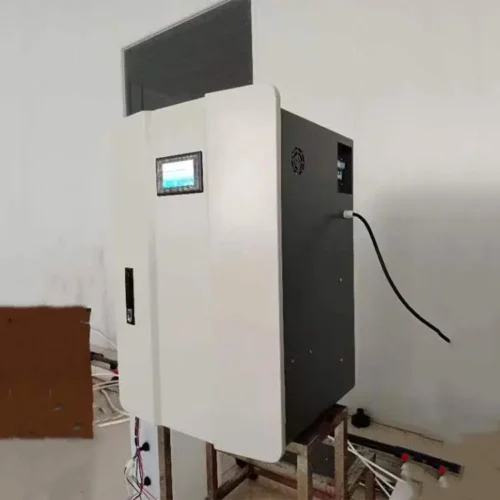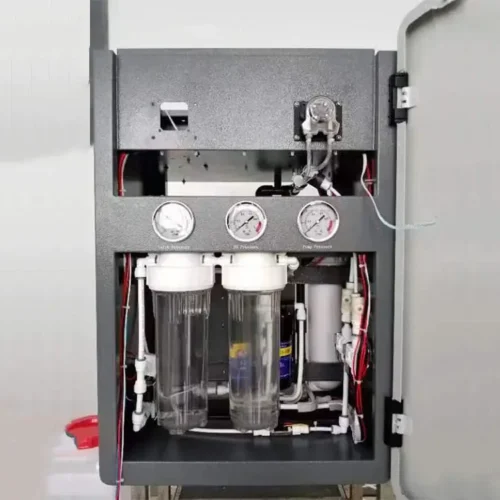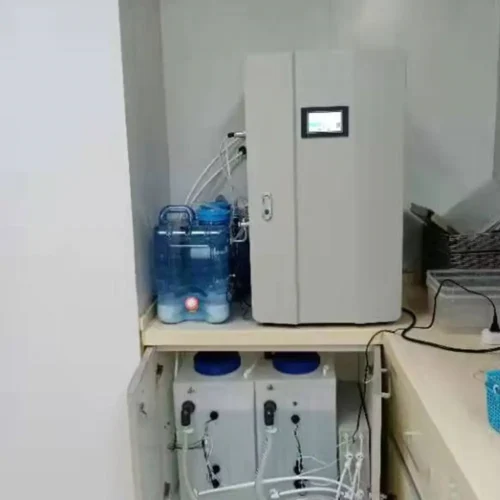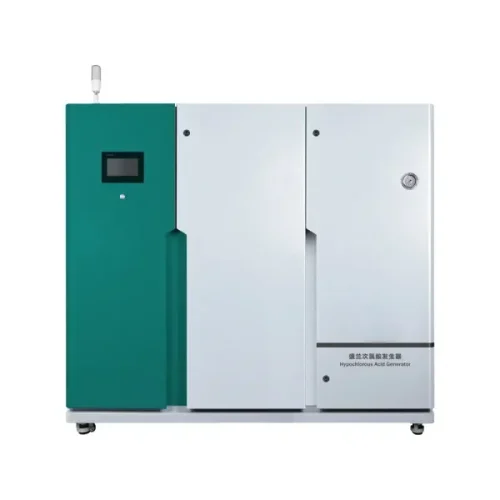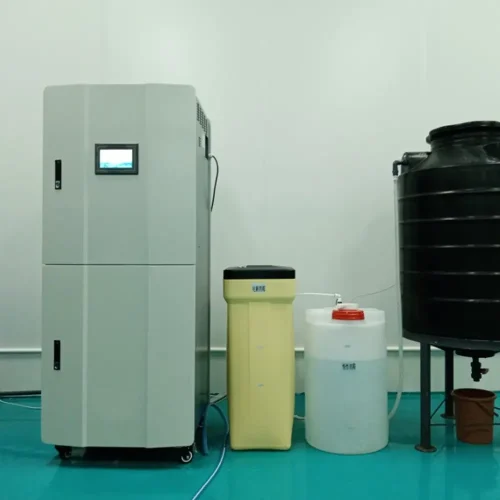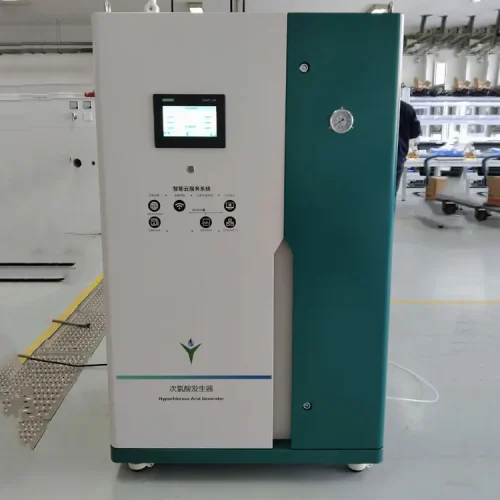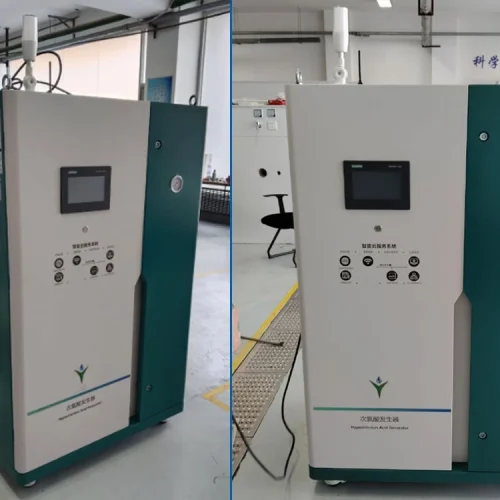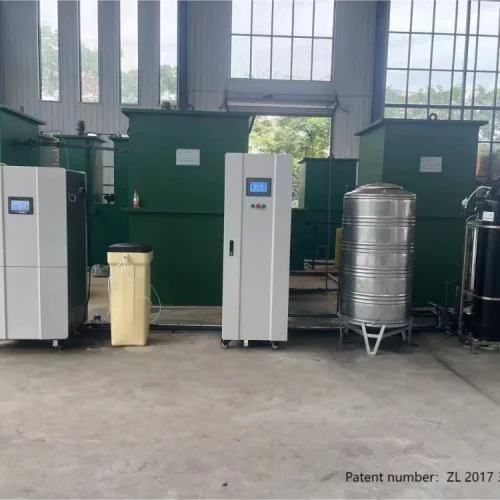Hypochlorous acid generator, which uses diaphragm electrolysis of table salt (Nacl), generates hypochlorous acid solution at the anode. With a concentration of 250-1200PPM and a PH: 5.0-7 can be use for disinfection and sterilization in various scenarios. For instance.In agricultural planting, it can adjust the pH of the soil. Prevent the occurrence of pests and diseases, and increase the survival rate of crops. In agricultural planting. It can be use for deodorization in animal husbandry and drinking water for livestock and poultry. In food processing, it can be use for cleaning fruits and vegetables and preserving them.
The cathode liquid generates alkaline water (sodium hydroxide NaOH) with a PH range of 7 to 12.5. Which can be use for decontamination, stain removal, and daily cleaning, etc.

High concentration hypochlorous acid generator parameters
| Product name | High-concentration 1200PPM hypochlorous acid generator is used in agricultural planting |
|---|---|
| concentration | 500-1200PPM(Adjustable) |
| Flow rate | 200L/H |
| PH of acidic water | 5.0-8.0 |
| Electrolyte | salt(Nacl)or Potassium chloride(KCL) |
| Maximum current | 30A |
| Voltage | 380V/50Hz |
| Size | 70cm*60cm*175cm |
Application scenarios of hypochlorous acid generators in agricultural planting
1. Seed treatment stage
Before sowing, soak the seeds in a 50-100 PPM hypochlorous acid solution.Which can effectively inactivate pathogens such as anthrax carried on the seed surface. This can not only increase the germination rate of seeds by 15% to 20%.But also significantly enhance the stress resistance of seedlings.laying a solid foundation for the subsequent healthy growth of crops. For instance, in some vegetable cultivation. Seeds treated with hypochlorous acid germinate more uniformly.And the seedlings’ resistance to early diseases is significantly enhanced.
2. Application during the seedling stage
For the seedling environment, such as seedbeds and seedling trays. The method of atomization disinfection is adopte. The hypochlorous acid solution produced by the hypochlorous acid generator is use for disinfection. Which can significantly reduce the risk of common seedling diseases such as damping-off and damping-off. After adopting this method.The survival rate of strawberry seedlings in a certain strawberry cooperative in Shanghai increased from the original 70% to over 80%. Effectively ensuring the quantity and quality of seedlings in the early stage of strawberry planting. Meanwhile. Hypochlorous acid can also purify the air in the seedling environment. Reduce the sprea of bacteria in the air, and create a relatively sterile and favorable growth environment for the seedlings.
The control of diseases during the growth period of crops by hypochlorous acid
1,Fungal disease control
During the growth of crops, fungal diseases such as downy mildew and powdery mildew are relatively common. Foliar spraying with a 50ppm hypochlorous acid solution can achieve a control effect of 88% on these fungal diseases. This provides farmers with a green prevention and control solution that can replace chemical pesticides. Which can reduce the use of chemical pesticides by 30% to 50%. It not only lowers the risk of pesticide residues in agricultural products but also reduces environmental pollution. Take grape cultivation as an example. Regular spraying with hypochlorous acid solution can effectively prevent the outbreak of downy mildew in grapes and ensure the quality
and yield of grapes
2. Bacterial disease prevention
or bacterial diseases such as bacterial wilt and soft rot, adding 10ppm of hypochlorous acid to the irrigation water can continuously prevent the spread and infection of the pathogens. After a certain greenhouse cucumber grower in Weifang adopted this method, the losses caused by diseases decreased by 60%. In addition, hypochlorous acid can also purify irrigation water. A concentration of 0.5 to 1ppm of hypochlorous acid can inactivate pathogenic microorganisms such as Escherichia coli in water. For instance, some horticultural bases in Shandong have successfully achieved zero transmission of waterborne diseases by using hypochlorous acid in irrigation water, ensuring the safety of water used for crop growth
3. Soil environment improvement
For soil with soil-borne diseases, such as plots severely affected by soil-borne pathogens like Fusarium and nematodes.Irrigating the soil with a 200ppm hypochlorous acid solution and combining it with film covering fumigation technology can kill over 90% of the soil-borne pathogens. Effectively alleviating the continuous cropping obstacles of common crops such as solanaceous crops. Meanwhile, the hydrogen and oxygen molecules released during the electrolysis of water can activate the soil aggregate structure. Decompose the alleogenic substances in the soil.Increase the pore oxygen content of compacted soil by 40%.Promote the development of crop roots, and enhance the crop’s ability to absorb nutrients.
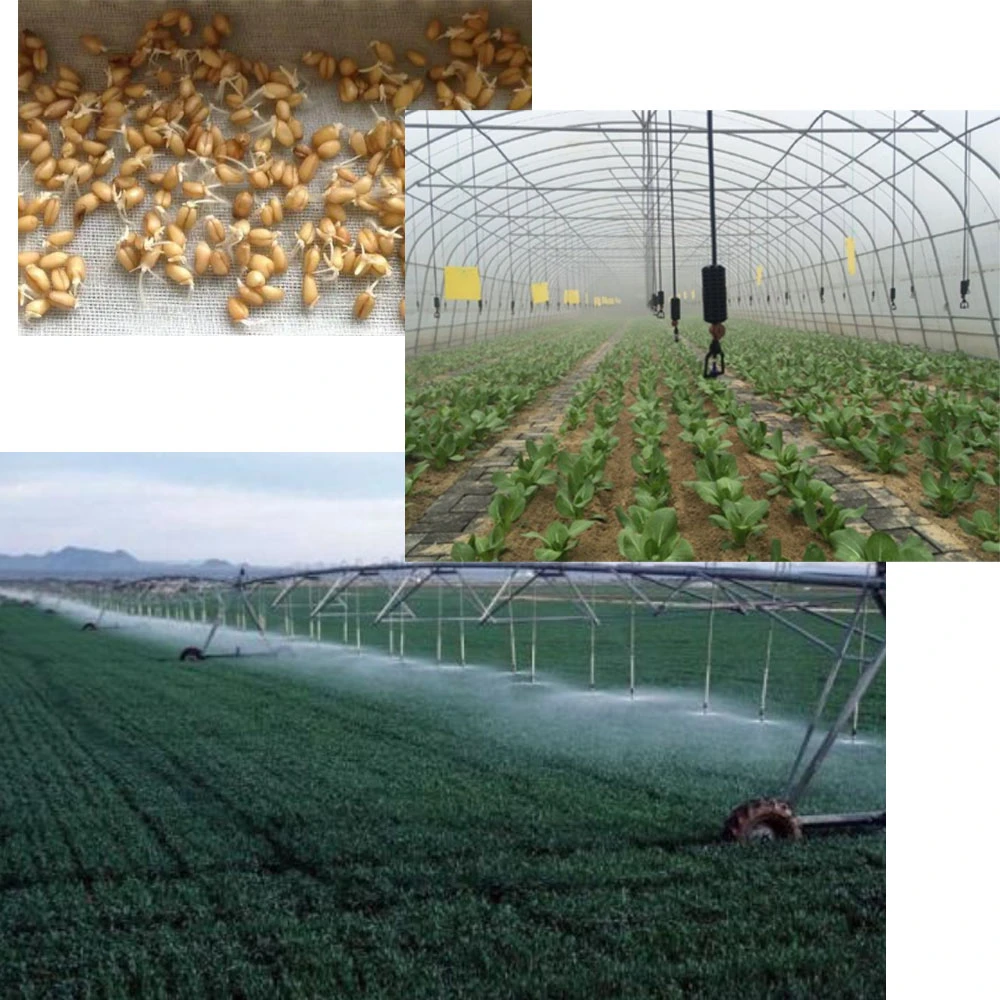
At present. The solution of hypochlorous acid generators has been applie in agricultural scenarios in many countries and regions such as strawberry cultivation in Japan, hydroponic farms in the Netherlands. And facility agriculture in China, with a service network covering over 30 countries. With the continuous development and improvement of technology, it is believed that hypochlorous acid generators will play a more important role in the field of agricultural planting in the future and contribute greater strength to the green and efficient development of global agriculture. Whether it is field planting, facility agriculture, or new agricultural models such as hydroponics and aeroponics, hypochlorous acid generators are expecte to become a powerful assistant in ensuring the healthy growth of crops and help agricultural production reach new heights.
Factory strength
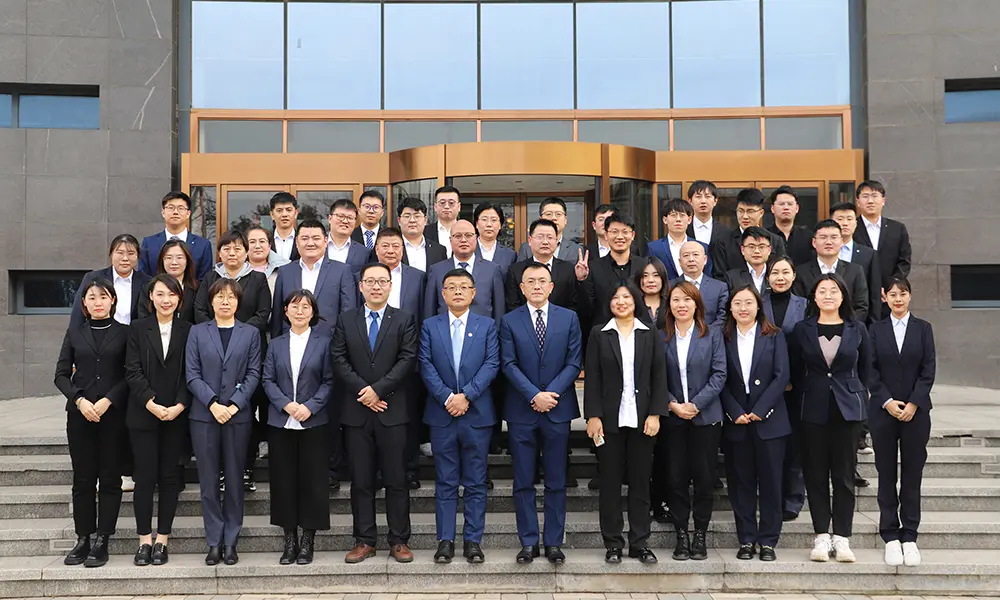
Case client
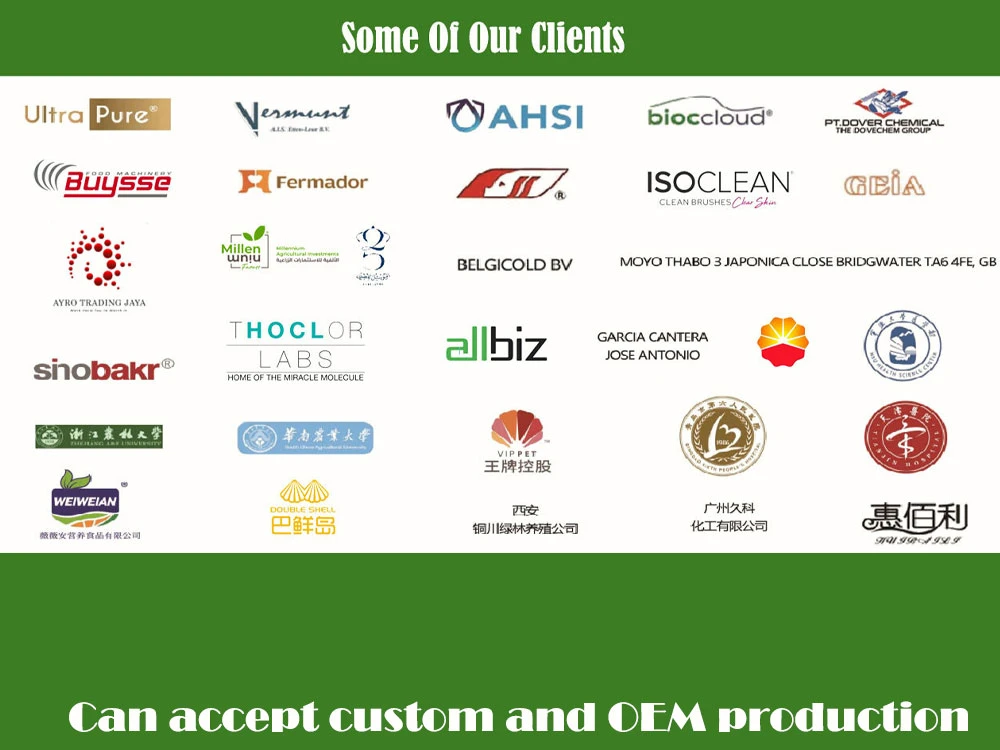
Factory delivery
